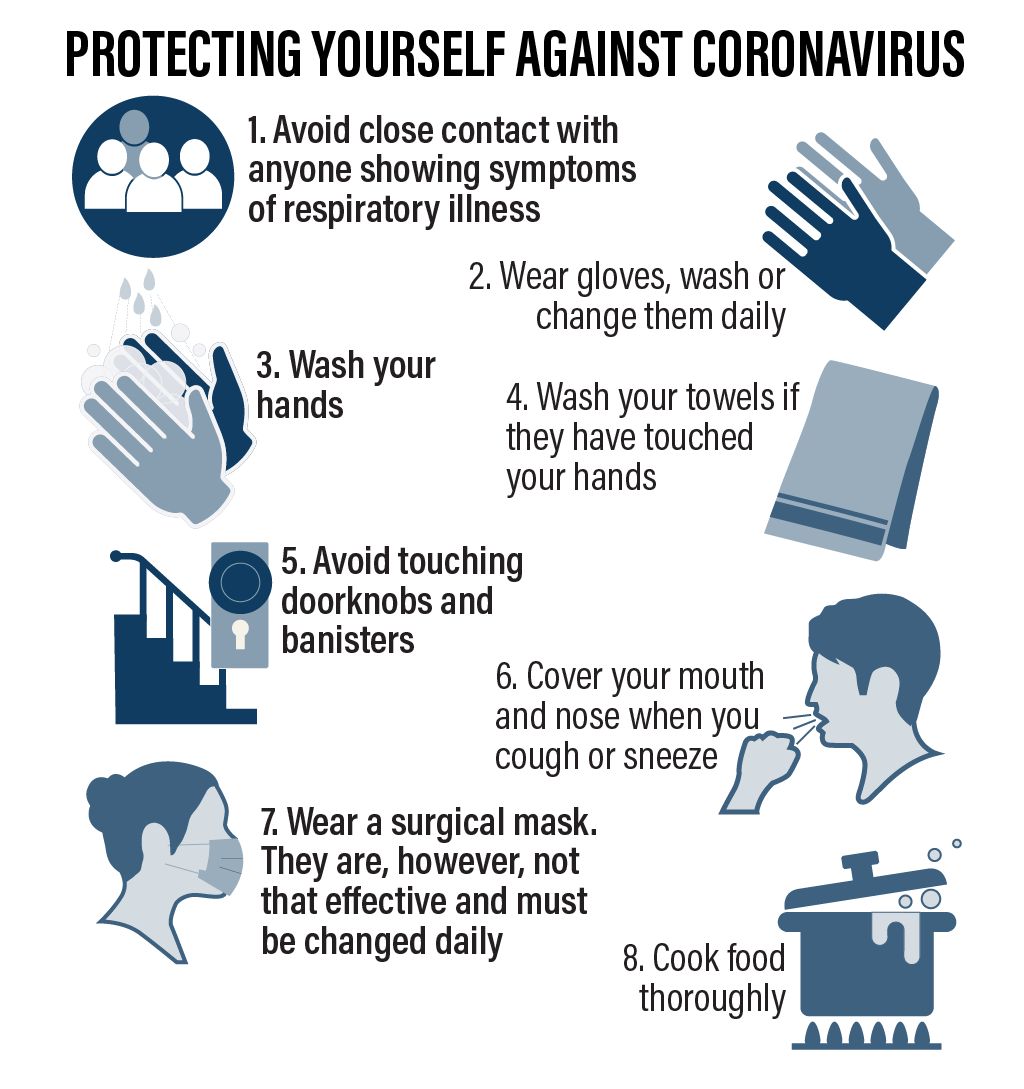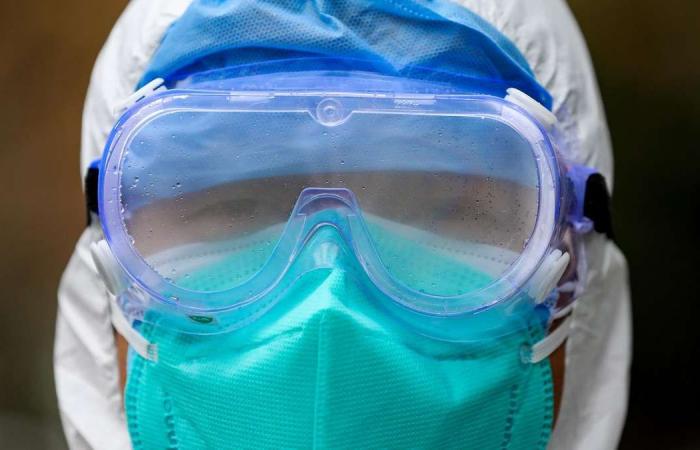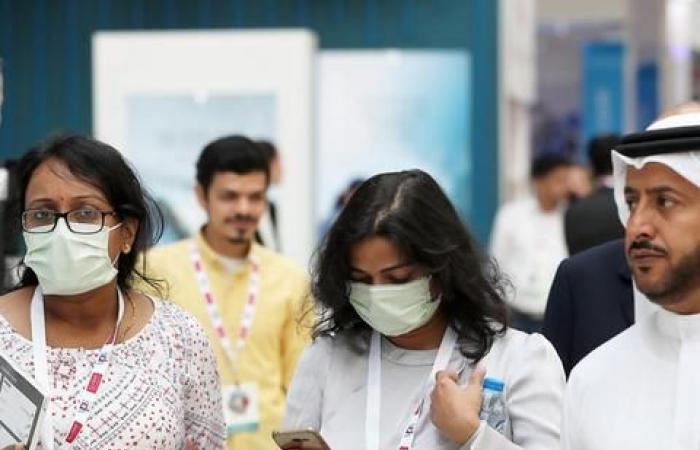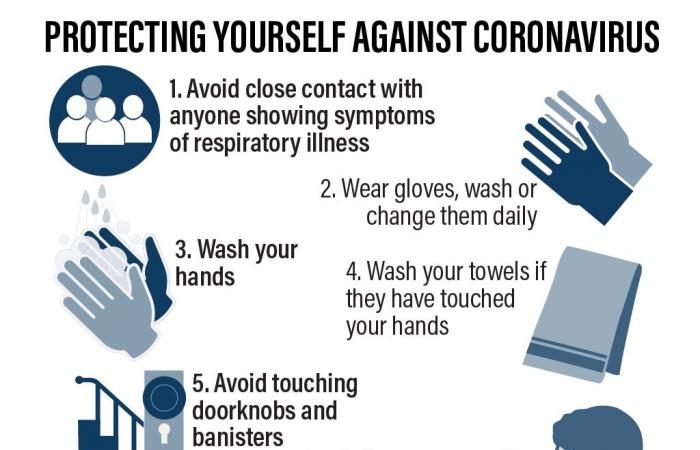Thank you for your reading and interest in the news What is coronavirus? Symptoms, prevention and how the China virus spreads and now with details
Hind Al Soulia - Riyadh - World health officials expressed “great concern” on Wednesday that coronavirus is starting to spread between people outside of China, a troubling development as the governments frantically work to contain the outbreak. Over the last few days, the number of infections has grown dramatically.
More sick, but fewer dead than Sars
The new virus has now infected more people in China than were sickened there during the 2002 to 2003 Sars outbreak. The number of cases has jumped to 7,711, surpassing the 5,327 people diagnosed with Sars.
The death toll, which rose to 170 on Wednesday, is still less than half the number who died in China from Sars, or severe acute respiratory syndrome. Scientists say there are many questions to be answered about the new virus, including just how easily it spreads and how severe it is.
How coronavirus spreads
In a report published on Wednesday, Chinese researchers suggested that person-to-person spread among those in close contact occurred as early as mid-December.
Based on the first 425 confirmed cases, the researchers estimate that each infection led to 2.2 others on average.
That’s a bit more than ordinary flu but far less than some other respiratory diseases, such as whooping cough and tuberculosis. The rate for Sars, a cousin to this new virus, was estimated to be 3.
“Considerable efforts” will be needed to control the spread if this ratio holds up elsewhere, researchers wrote in the report, published in the New England Journal of Medicine.
More than half of the cases with symptoms that began before January 1 were tied to a seafood market, but only 8 per cent of cases after that have been, researchers found. They reported the average incubation period was five days.
Meanwhile, the World Health Organization’s emergencies chief said the few cases of human-to-human spread of the virus outside China — in Japan, Germany, Canada and Vietnam — were of “great concern”. They were part of the reason the WHO's director-general was reconvening a committee of experts on Thursday to assess whether the outbreak should be declared a global emergency.
Dr Michael Ryan spoke at a news conference in Geneva after returning from a trip to Beijing to meet Chinese President Xi Jinping and other senior government leaders. He said China was taking “extraordinary measures in the face of an extraordinary challenge” posed by the outbreak.
Where is it and how deadly is coronavirus?
To date, about 99 per cent of the over 7,700 cases are in China. There are also cases confirmed in Thailand, Japan, Hong Kong, Singapore, Taiwan, Australia, Malaysia, Macau, France, South Korea, Germany, the United Arab Emirates, Canada, Vietnam, India, the Philippines, Nepal, Cambodia, Sri Lanka and Finland.
Dr Ryan estimated the death rate of the new virus at 2 per cent, but said the figure was very preliminary. With fluctuating numbers of cases and deaths, scientists are only able to produce a rough estimate of the fatality rate and it’s likely many milder cases of the virus are being missed.
In comparison, the Sars virus killed about 10 per cent of people who caught it. The new virus is from the coronavirus family, which includes those that can cause the common cold as well as more serious illnesses such as Sars and Mers.
Dr Ryan noted there were several aspects of the new virus outbreak that are extremely worrying, citing the recent rapid spike in cases in China. He said that while scientists believe the outbreak was sparked by an animal virus, it’s unclear if there are other factors driving the epidemic.
“Without understanding that, it’s very hard to put into context the current transmission dynamics,” he said.
What should be done?
Countries have stepped up monitoring of new arrivals and are isolating anyone who might be infected while they do tests.
British health secretary Matt Hancock tweeted that “anyone who returns from Wuhan will be safely isolated for 14 days, with all necessary medical attention”.
The measures are a step up from those during the devastating 2014-16 Ebola outbreak, when returning travellers from West Africa were asked to monitor themselves for symptoms.
Mark Woodhouse, a professor of infectious disease epidemiology at the University of Edinburgh, said the steps are justified to prevent the introduction of the virus and its spread.
“There’s always a balance between the draconian measures of public health and what people might want to do, and obviously it’s regrettable if people who turn out not to have the virus are quarantined unnecessarily,” he said.
In China’s Hubei province, 17 cities including Wuhan have been locked down, trapping more than 50 million people in the most far-reaching disease control measures ever imposed.
During the 2002 to 2003 Sars epidemic, China was slammed for hiding that outbreak for months, allowing it to spread unchecked before reporting it to the WHO. Even after inviting international experts to investigate the epidemic, Sars patients were moved from hospitals and driven around in ambulances to conceal the true extent of the virus’ spread.
Visitors wear protective face masks at the Arab Health conference at Dubai World Trade Centre. Pawan Singh / The National
Mohammed Al Ghamdi from Saudi Diagnostics wears a face mask at the Arab Health conference at Dubai World Trade Centre in Dubai. Pawan Singh / The National
Doctors say the masks offer limited protection and the public are at little risk. Pawan Singh / The National
Tourists wear face masks on Sunset Beach near the Burj Al Arab hotel on Wednesday, hours after the country declared its first case. Antonie Robertson / The National
Masks were selling out in stores in Dubai and Abu Dhabi on Wednesday. Doctors say they offer limited protection and urged the public not to panic over a single reported case. Antonie Robertson / The National
The masks were popular with Chinese tourists even before the Wuhan outbreak and are commonly seen being worn in airports. Antonie Robertson / The National
A tour group, some of whom covered their faces, take photos next to the Burj Al Arab in Dubai on Wednesday. Antonie Robertson / The National
A medical worker checks the body temperature of a driver at a checkpoint outside the city of Yueyang, Hunan province, near the border with Hubei province, which is in lockdown. Reuters
A woman wearing a face mask passes a health notice warning passengers arriving at London's Heathrow Airport about the virus. AFP
Tokyo quarantine officers wearing full protective gear approach a charted flight, believed to be carrying Japanese citizens repatriated from Wuhan, at Haneda airport in Tokyo. EPA
A Kenyan health worker screens a passenger wearing face mask after they arrived from China, at Jomo Kenyatta International Airport in Nairobi. EPA
Medical personnel take temperature tests of passengers on board a plane at the airport in Zhoushan City, Zhejiang province, China. EPA
Passengers are seen on a thermal screen upon their arrival at the Tribhuvan International Airport after Nepal confirmed the first case of coronavirus in the country. Reuters
An airport official checks the temperature of a passenger upon his arrival at the Bacha Khan International Airport in Peshawar. AFP
An airport official checks the temperature of a passenger upon his arrival at the Bacha Khan International Airport in Peshawar. AFP
Disinfection workers wearing masks spray antiseptic solution at Incheon International Airport in Incheon, South Korea. Getty Images

Symptoms or no symptoms?
Two of three Japanese people evacuated from China this week and found to be infected with a new coronavirus had not shown symptoms, the health ministry said on Thursday.
Although the Chinese health minister and others have suggested that the virus is spreading before people get symptoms, data to confirm that has not yet been shared widely beyond China.
“It’s still unclear whether that takes place,” said Malik Peiris, chair in virology at the University of Hong Kong.
“The fortunate thing about Sars, if there was anything fortunate, was that transmission did not take place before symptoms,” he said. If it turns out that the new coronavirus can indeed be spread by people who don’t show any symptoms, “a pandemic is a scenario that we have to consider.”

Updated: January 30, 2020 04:35 PM
These were the details of the news What is coronavirus? Symptoms, prevention and how the China virus spreads for this day. We hope that we have succeeded by giving you the full details and information. To follow all our news, you can subscribe to the alerts system or to one of our different systems to provide you with all that is new.
It is also worth noting that the original news has been published and is available at The National and the editorial team at AlKhaleej Today has confirmed it and it has been modified, and it may have been completely transferred or quoted from it and you can read and follow this news from its main source.



